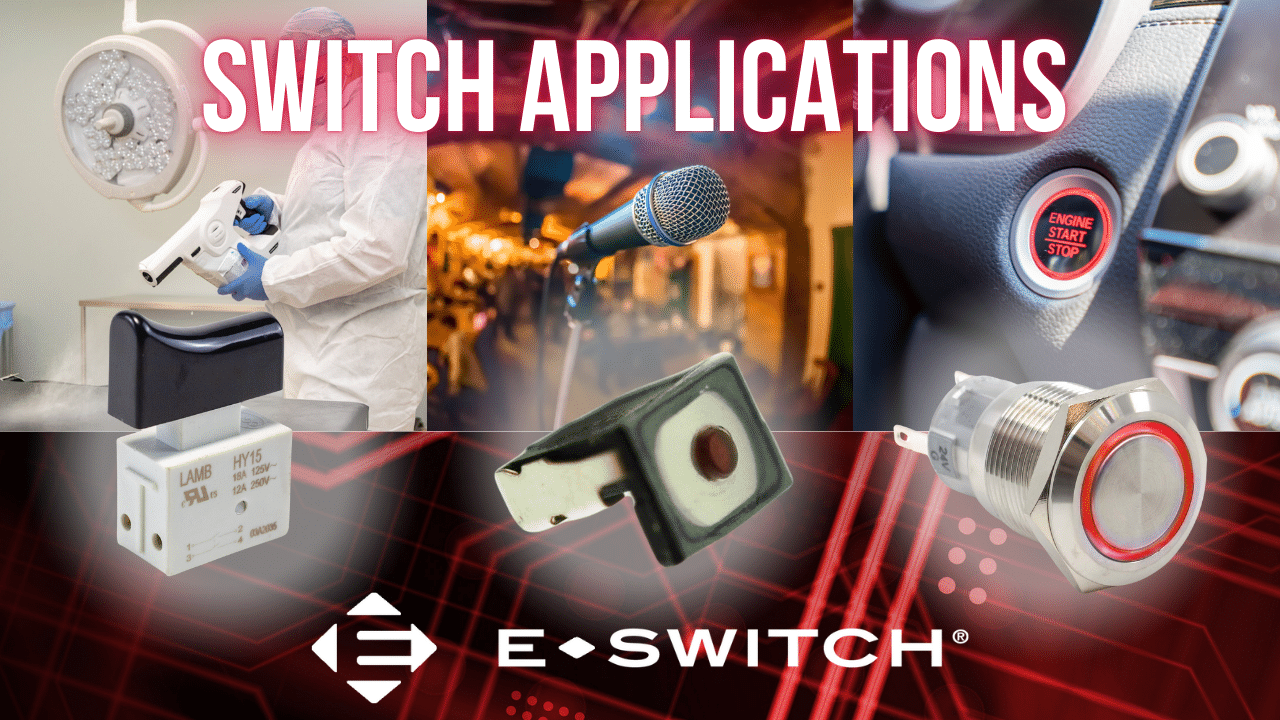The beauty of a switch lies in its simplicity — they’re able to turn an ordinary experience into something extraordinary with the push of a button. But what is an electromechanical switch, and what are some concrete examples of how various switch types are used in products and applications?
What is an Electromechanical Switch?
Switches are designed to open or close an electrical circuit to either allow or block the flow of current. Switches are control mechanisms that are actuated manually or automatically to control the state of a circuit.
They directly control the pathway of electricity and are instrumental in turning devices on or off based on user input or preset conditions. Switches contain a mechanical component that serves as the switch’s actuator, like a button or toggle, which — when actuated — changes the state of the switch.
There are many different types of switch products (E-Switch has 17 distinct categories), so let’s explore the various application examples by product type, including tactile, anti-vandal, pilot light, pushbutton, emergency stop, slide, rocker, toggle, DIP and snap action switches.
Electromechanical Switch Examples: Tactile Switch Uses

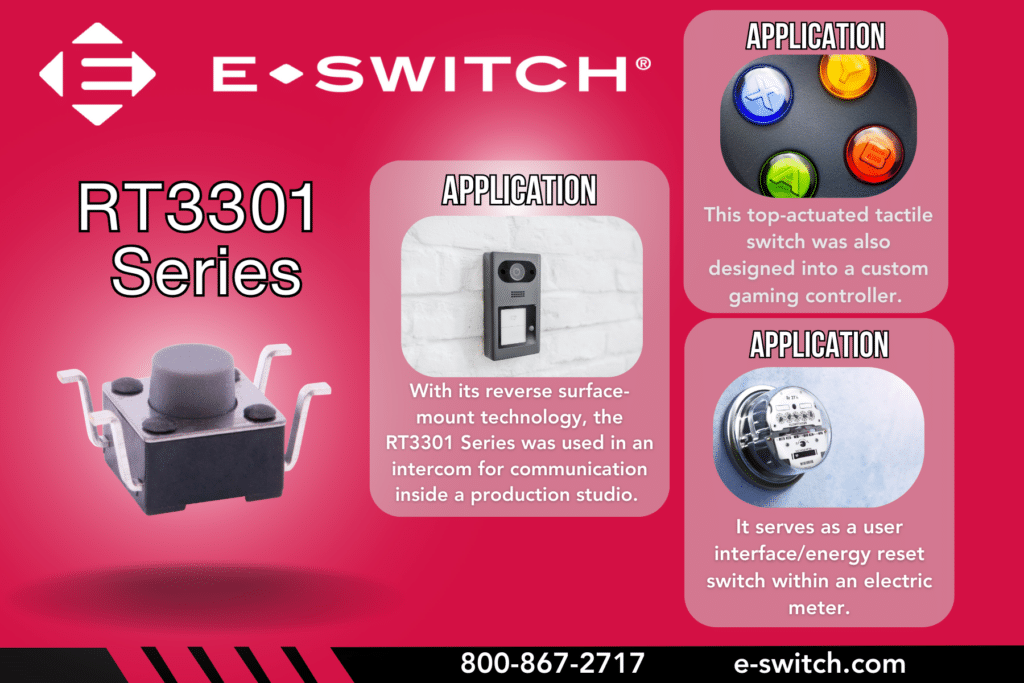
Tacts are a type of momentary switch designed to be used in electronic devices to provide tactile feedback to the user when pressed. The definition of tactile is “perceptible by touch; tangible” and tacts are specifically designed to be perceived by touch.
Electromechanical Switch Examples: Anti-Vandal Switch Uses

An anti-vandal is an electromechanical switch designed to be installed in devices where they’re susceptible to harsh use, vandalism and theft, as well as to withstand extreme temperatures and be resistant to dust and moisture. Anti-vandal switches are also referred to as vandal-resistant, vandal-proof, tamper-resistant or tamper proof.
Electromechanical Switch Examples: Pilot Light Indicator
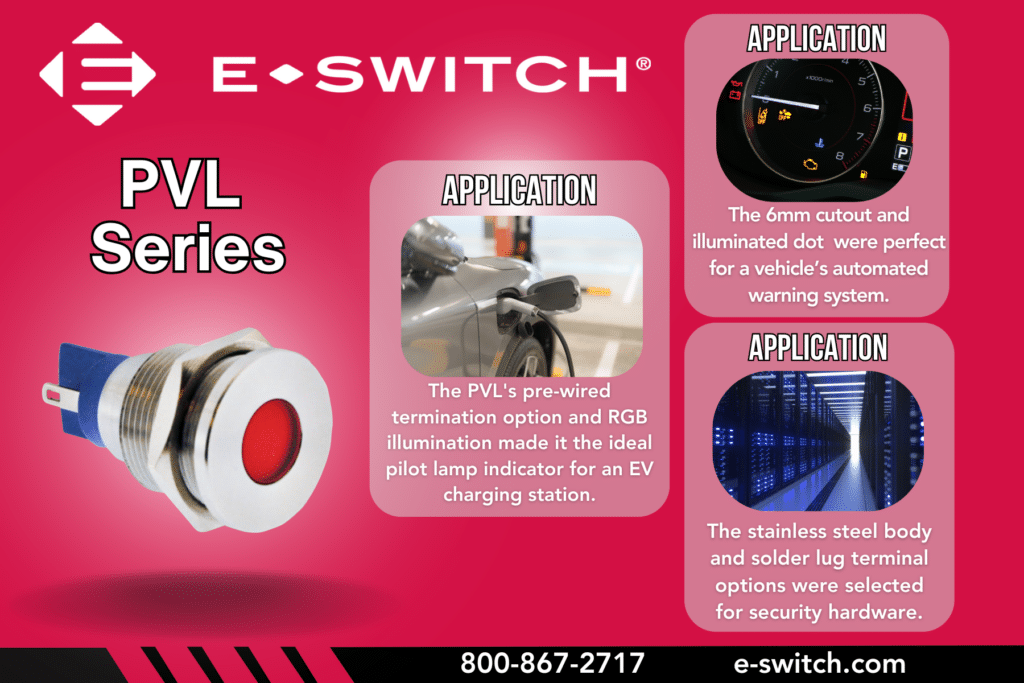
A pilot light is an electrical switch that includes a small indicator light. This light illuminates when the circuit is closed and the switch is in the “on” position. The pilot light serves as an indicator to show whether the connected load (such as a light fixture) is powered on or off.
Electromechanical Switch Examples: Pushbutton Switch Uses
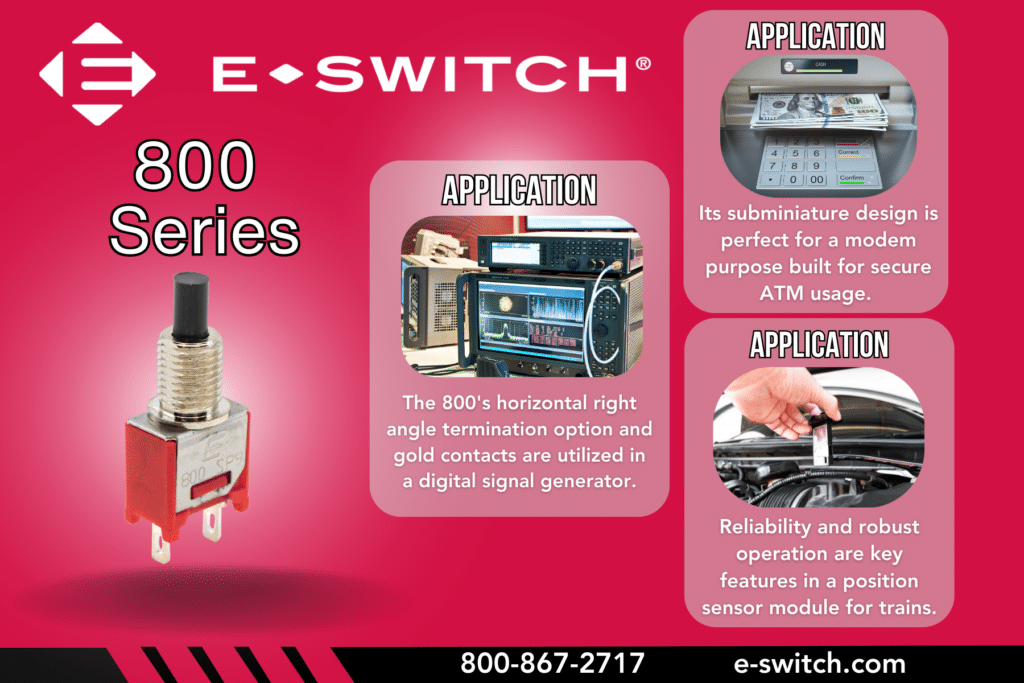
A pushbutton is a type of electrical switch that’s used to control a circuit by physically pressing a button. A pushbutton switch, also known as a push switch, is used to control the flow of electric current in a circuit.
Electromechanical Switch Examples: Emergency Stop Switch Uses
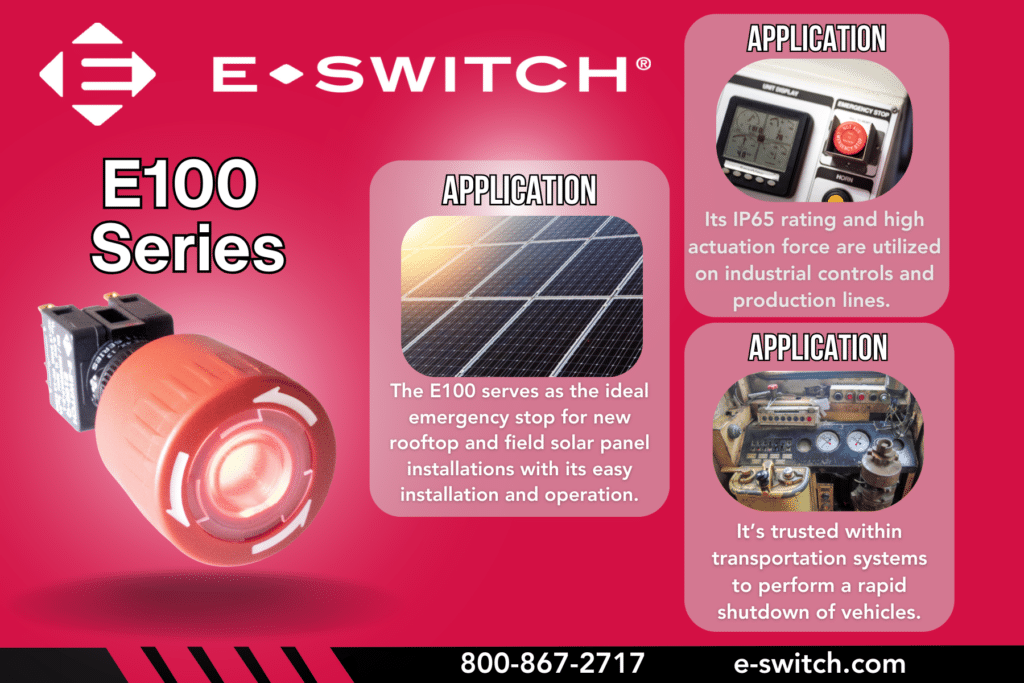
An emergency stop, also known as an E-Stop, is a safety mechanism used to quickly shut down machinery or equipment in emergency situations when standard shutdown procedures are not feasible. When activated, it immediately stops the operation of associated equipment by interrupting the power, shutting it down and preventing potential accidents.
Electromechanical Switch Examples: Slide Switch Uses
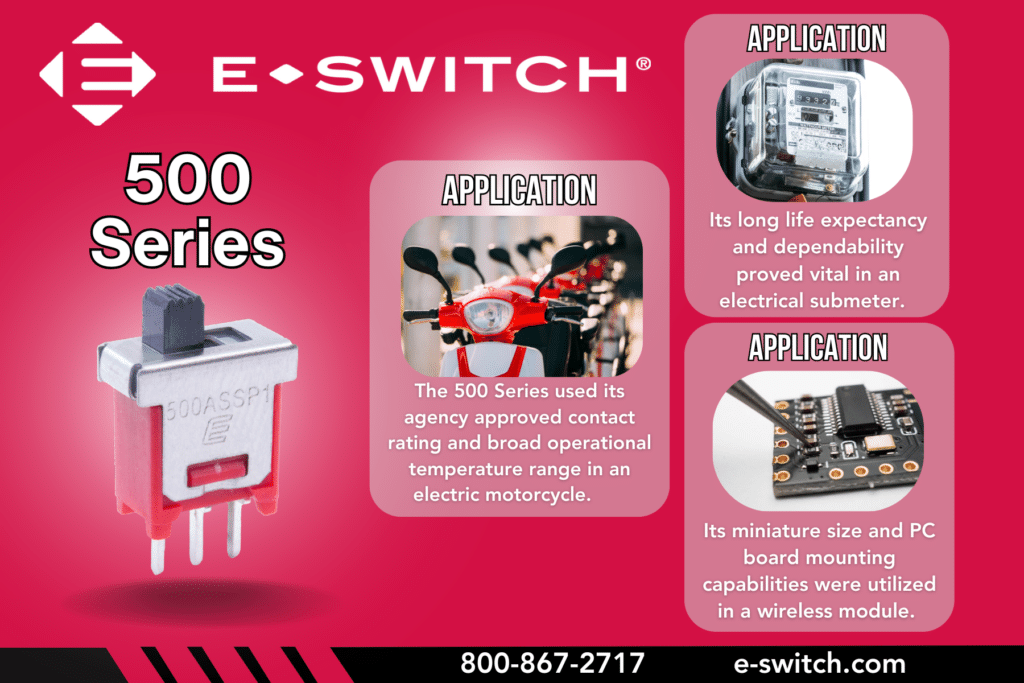
A slide is a type of electrical switch that’s commonly used to control the flow of electricity in devices. It’s defined by its method of operation: a slider moves from position to position in a linear direction, allowing circuits to open and close.
Electromechanical Switch Examples: Rocker Switch Uses

Rockers are commonly used as an on/off switch that rocks (rather than trips) when pressed, meaning the rocker opens or closes the circuit. So one side of the rocker switch is raised while the other side is depressed, much like a seesaw or rocking horse.
Electromechanical Switch Examples: Toggle Switch Uses

A toggle is a mechanical switch that’s commonly used to control the flow of electricity in devices. It’s characterized by the presence of a manually operated handle or lever which controls the flow of current from the power supply to a device (such as a household appliance). It consists of a lever or handle that can be moved back and forth between two positions, hence the name “toggle.”
Electromechanical Switch Examples: DIP Switch Uses
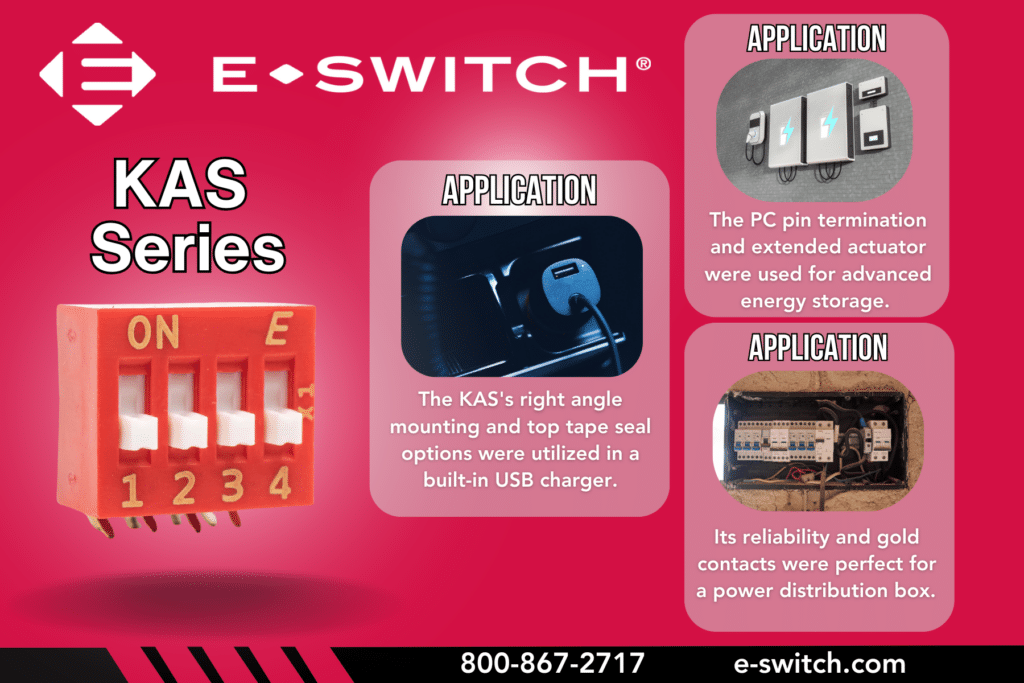
DIP is short for “Dual In-line Package.” A DIP switch is designed to be mounted on printed circuit boards and is commonly used to customize the behavior of an electronic device for specific situations. It’s a type of manual electric switch that contains a group of switches within a single package.
Electromechanical Switch Examples: Snap Action Switch Uses

Snap actions, also called microswitches, are switch devices that can open and/or close an electrical circuit at a rapid speed. They’re triggered by an external force, either human or physical object, which is then applied to the actuator, requiring very little pressure to operate.
If you’d like to see more examples of the products and industries that specific switches cater to, visit the “Markets” section of our website.
